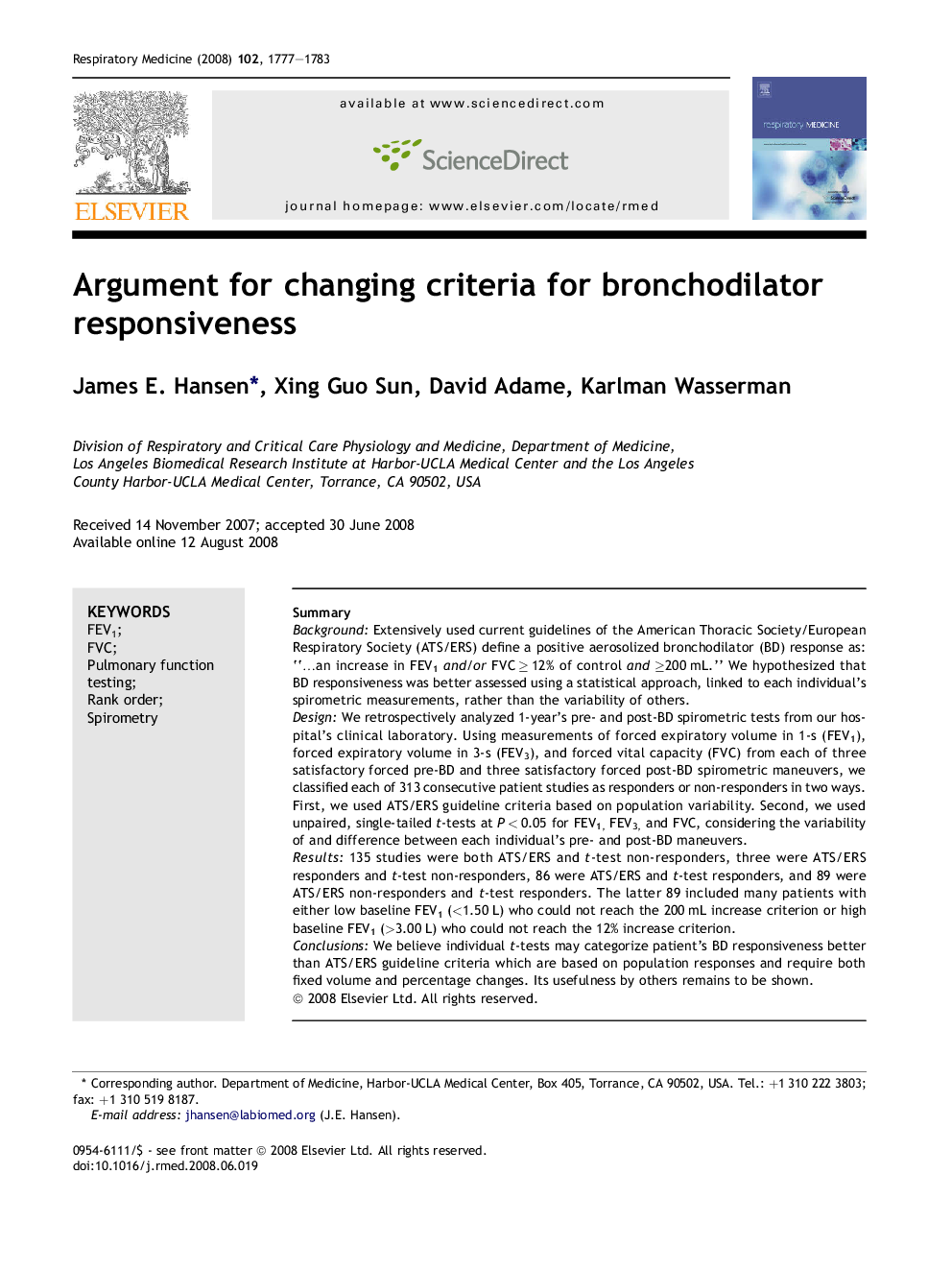| Article ID | Journal | Published Year | Pages | File Type |
|---|---|---|---|---|
| 4212210 | Respiratory Medicine | 2008 | 7 Pages |
SummaryBackgroundExtensively used current guidelines of the American Thoracic Society/European Respiratory Society (ATS/ERS) define a positive aerosolized bronchodilator (BD) response as: “…an increase in FEV1and/or FVC ≥ 12% of control and ≥200 mL.” We hypothesized that BD responsiveness was better assessed using a statistical approach, linked to each individual's spirometric measurements, rather than the variability of others.DesignWe retrospectively analyzed 1-year's pre- and post-BD spirometric tests from our hospital's clinical laboratory. Using measurements of forced expiratory volume in 1-s (FEV1), forced expiratory volume in 3-s (FEV3), and forced vital capacity (FVC) from each of three satisfactory forced pre-BD and three satisfactory forced post-BD spirometric maneuvers, we classified each of 313 consecutive patient studies as responders or non-responders in two ways. First, we used ATS/ERS guideline criteria based on population variability. Second, we used unpaired, single-tailed t-tests at P < 0.05 for FEV1, FEV3, and FVC, considering the variability of and difference between each individual's pre- and post-BD maneuvers.Results135 studies were both ATS/ERS and t-test non-responders, three were ATS/ERS responders and t-test non-responders, 86 were ATS/ERS and t-test responders, and 89 were ATS/ERS non-responders and t-test responders. The latter 89 included many patients with either low baseline FEV1 (<1.50 L) who could not reach the 200 mL increase criterion or high baseline FEV1 (>3.00 L) who could not reach the 12% increase criterion.ConclusionsWe believe individual t-tests may categorize patient's BD responsiveness better than ATS/ERS guideline criteria which are based on population responses and require both fixed volume and percentage changes. Its usefulness by others remains to be shown.
